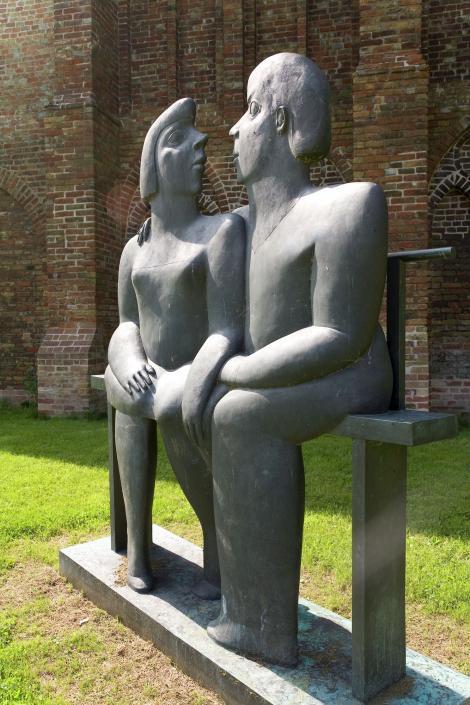Lissewege
 It seems as if time has stood still in Lissewege. With its lovely little canal, white-painted polder houses and expansive fields, it serves as a model for the way every Flemish village used to be: charming, nostalgic and romantic. The brick Church of Our Lady of Visitation is a textbook example of ‘coastal Gothic’. Its remarkable interior has a miraculous statue of the Virigin Mary (1625), an exceptional organ case and a beautifully sculptured rood loft and pulpit (1652). Anyone who makes the effort to climb the 264 stairs of the truncated tower is rewarded with a panoramic view over the polders, stretching as far as Ostend and Bruges. On a clear day, you can even see Walcheren (Zeeland). Lissewege was already a place of pilgrimage in the Middle Ages. In a nearby creek, fishermen discovered the miraculous statue of the Virgin Mary and the church was built to house it. Pilgrims on the road to Santiago de Compostela stopped off in Lissewege and their gifts and donations helped to bring the village a certain prosperity. In 1106, French Benedictines were approached to found an abbey in Lissewege. Due to their neglect, the land on which the Thosan Chapel stood passed into the hands of the Cistercians and it was they who built the famous abbey complex of Ter Doest. Many farms were constructed in the (wide) area around the abbey, often on land that the monks had reclaimed from the sea.
It seems as if time has stood still in Lissewege. With its lovely little canal, white-painted polder houses and expansive fields, it serves as a model for the way every Flemish village used to be: charming, nostalgic and romantic. The brick Church of Our Lady of Visitation is a textbook example of ‘coastal Gothic’. Its remarkable interior has a miraculous statue of the Virigin Mary (1625), an exceptional organ case and a beautifully sculptured rood loft and pulpit (1652). Anyone who makes the effort to climb the 264 stairs of the truncated tower is rewarded with a panoramic view over the polders, stretching as far as Ostend and Bruges. On a clear day, you can even see Walcheren (Zeeland). Lissewege was already a place of pilgrimage in the Middle Ages. In a nearby creek, fishermen discovered the miraculous statue of the Virgin Mary and the church was built to house it. Pilgrims on the road to Santiago de Compostela stopped off in Lissewege and their gifts and donations helped to bring the village a certain prosperity. In 1106, French Benedictines were approached to found an abbey in Lissewege. Due to their neglect, the land on which the Thosan Chapel stood passed into the hands of the Cistercians and it was they who built the famous abbey complex of Ter Doest. Many farms were constructed in the (wide) area around the abbey, often on land that the monks had reclaimed from the sea.
Sadly, of all the abbey buildings only the pigeon tower, the monumental gatehouse and the enormous 14th century abbey barn have withstood the ravages of time. You can read more about the ‘white village’ in the local visitors’ centre.









